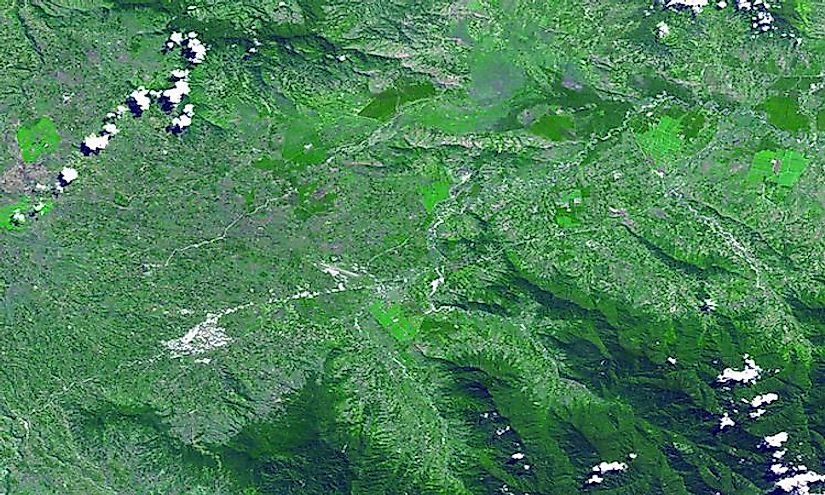Kuk Agricultural And Archaelogical Site, Papua New Guinea

Papua New Guinea can be counted among the handful of places in the world in which farming practices developed independently from other cultures. One of the archaeological sites that demonstrate this is Kuk Swamp, a collective name shared by several sites in the Wahgi Valley in the Highlands. These sites include the Manton site, which contains the first ditch system, identified in 1966; and the Kuk site, where the largest amount of excavation has been carried out. Kuk Swamp offers scholars a wealth of research potential on humanity’s early agricultural practices.
5. Description and History -
Kuk Swamp formed from what used to be a lake basin, filled by an alluvial fan. Kuk Creek flows through the fan to a catchment area in the lower hills. Early channels would flow the water past the fan’s reach. Evidence found on the site indicates that blocking these channels would turn the water flow into a swamp, and divert it into smaller tributary channels. Evidence suggests these early agricultural drainage systems could have existed as far back as 9,000 years ago. Researchers have found pits, tunnels, and postholes on the site, providing evidence for digging, tethering, and planting of plants – evidence of early agriculture on the site. They have also found evidence of the farming of banana and sugarcane dating to 6,400 to 6,900 years ago.
4. Tourism and Education -
The site has mostly attracted archaeologists and scientists interested in the ancient farming methods. Each year the site receives thousands of tourists from around the world who want to see and learn about this early civilization. The relevance of the site is that it provides clear evidence of the technological leap that took place then, and how agricultural practices developed over a long period.
3. Uniqueness -
Archaeologists have discovered numerous banana phytoliths in the site’s cultivation plots. Beginning with the knowledge that bananas do not produce as many phytoliths or as often as grass, researchers extrapolate that finding banana phytoliths in high abundance in a managed grassed landscape indicates deliberate planting rather than spontaneous growth around 6,950 and 6,550 years ago. These bananas were Eumusa bananas, which form the largest and most important group of banana domesticated, making Kuk one of the earlier sites for the development of agriculture on earth. Besides, scientists have found evidence of irrigation draining ditches which may be as old as 9,000 years old
2. Natural Surroundings, Sights, and Sounds -
The location of the Kuk agricultural and archaeological site is Wahgi Valley located in the Western Highland Province. This is 12.5 km northeast of Mt. Hagen City, which is the capital of the province. The city hosts a “sing sing” every year, an event which assembles traditional dancers in traditional costumes from Papua New Guinea’s various tribes, making it a culturally significant city.
1. Threats and Conservation -
In 2008 UNESCO listed Kuk Swamp as a World Heritage Site. To ensure that they do not destroy the integrity of the archaeological site, modern farming activities have been maintained at a low key. Archaeologists who have worked on the site have ensured that the scientific work and the excavations on the site comprise the highest international professional standards. Contemporary land use is restricted to only modern incarnations of the old methods.







